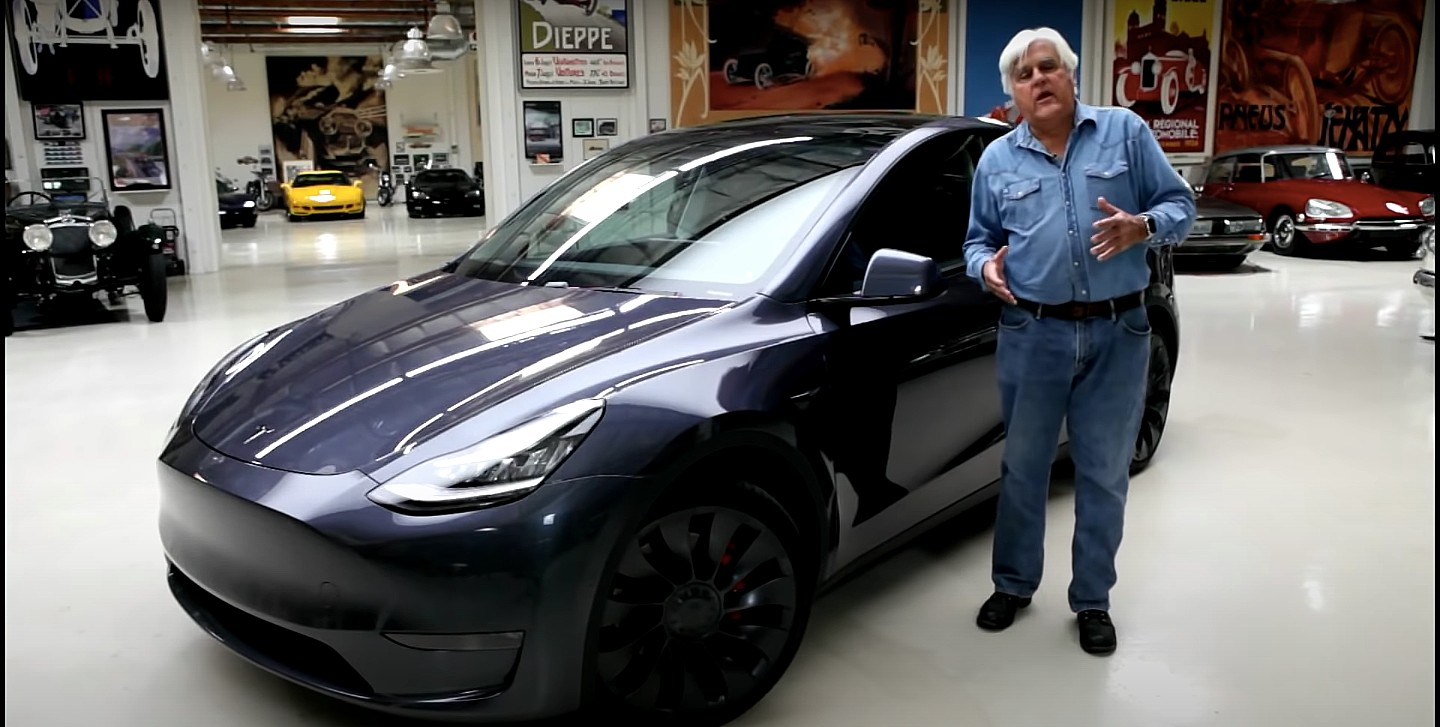
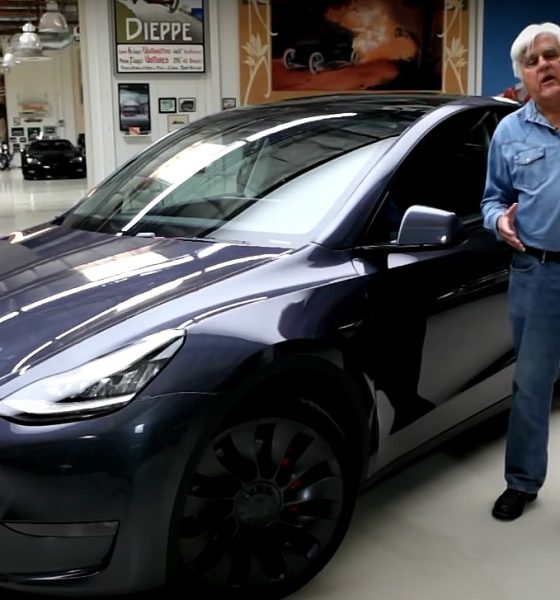
News
Tesla Model Y gets the full ‘Jay Leno’s Garage’ treatment: ‘It is fun, and it is addictive’
Devoted automotive enthusiast and outspoken Tesla fan Jay Leno got his hands on the Model Y Performance, the electric automaker’s newest crossover. Leno, a retired late-night talk show host, has had a long history of dealing with some of the world’s most impressive and famous cars. From a man whose car collection is worth an estimated $52 million, Leno has seen it all, which makes him an ideal candidate to give an honest and legitimate review of the Model Y.
Leno has a storied history with Tesla vehicles. After coming into contact with the first-ever production model of the Tesla Roadster in 2008, which Elon Musk delivered himself, Leno has owned a 2012 Model S and has also gotten firsthand looks at the Cybertruck and the Next-Gen Roadster.
The Model Y is different, though. It is Tesla’s second “mass-market” vehicle behind the Model 3, and it is expected to be the company’s most popular vehicle. Leno’s thoughts on the car, and his test of the Performance variant’s instant torque, gave plenty of insight for anyone walking the hypothetical tightrope between buying the vehicle and holding off.
Undoubtedly one of Leno’s favorite parts of the Model Y, which also applies to any Tesla vehicle, is the fact that the car is primarily locally sourced. “I like American-made stuff,” he said. While recognizing that Tesla employees do not make some of the car’s parts, the vast majority of the vehicle is. The seats, for example, are manufactured at a facility just a few miles away from where the cars are made in Northern California.
Versatility
Leno’s analysis sheds light on the fact that the car is perfect for the “young family.” The speed, particularly in the Performance variant, is excellent for those who want to have some fun while going from Point A to Point B. Meanwhile, the spacious trunk and fold-down rear seats would adequately pack a canoe, kayak, or simply give the kids enough room to make it to soccer practice comfortably. Leno even states that the Model Y could be the perfect place to sleep in an emergency.

Heat Pump
The heat pump that Tesla included in the Model Y was all the buzz in early-2020. Leno mentions that the efficiency of a heat pump highlights and compliments the efficiency of the vehicle overall, citing the system’s past uses in other cars. The system was included to help with range loss in cold climates, which was an issue with owners who dealt with long, harsh winters while driving their electric cars.
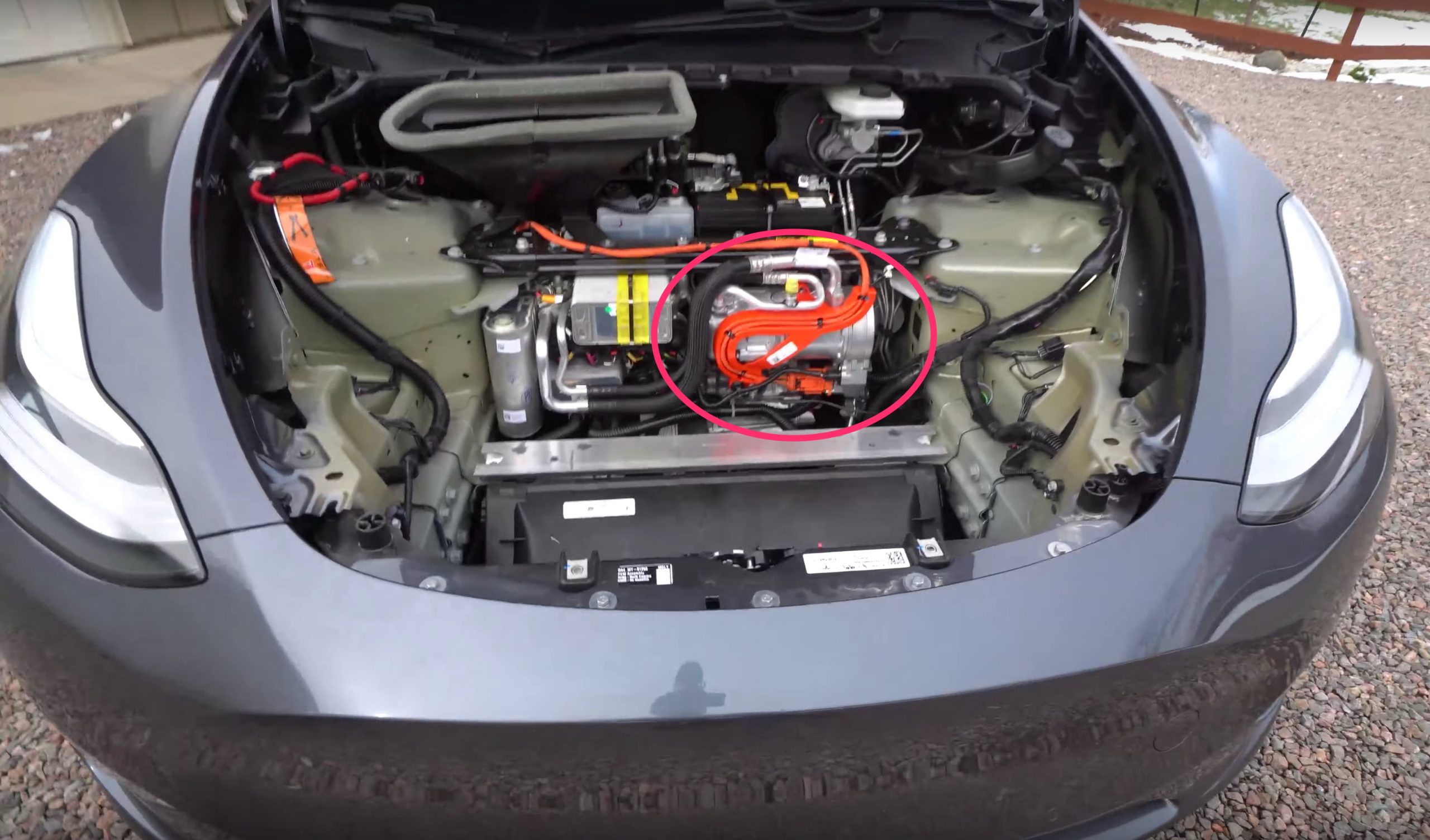
Interior
Despite recent reports from Edmunds that have stated Tesla’s minimalistic interior design is dangerous and inconvenient, Leno is a fan of what the Model Y looks like from the inside. From the wireless charging to the wood grain dash panel, Leno is in favor of Tesla’s design. It has certainly made the past interior designs of luxury vehicles look more intimidating than they are. Still, a large screen and a couple of steering wheel buttons are self-explanatory, and Leno enjoys it.
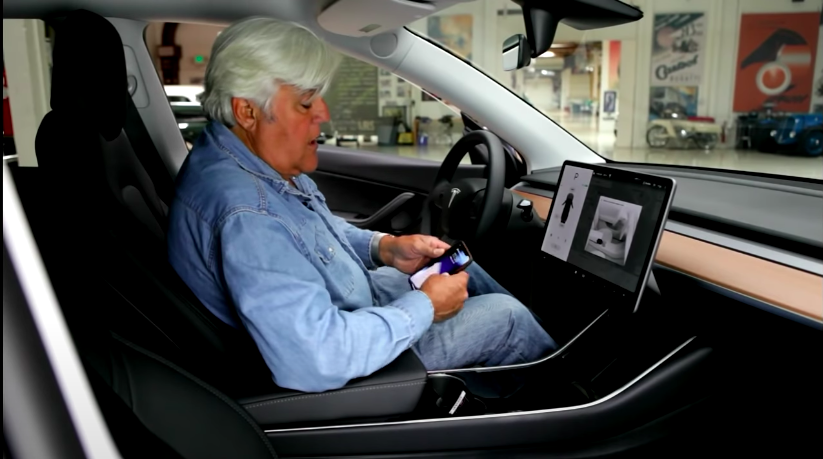
Performance
Leno admits that the Y feels a lot like his 2012 Model S, but the Y gives a slightly different experience considering its shape and center of gravity. The build of the car certainly doesn’t take away from the Performance. “You get the speed of a muscle car, with all the load-carrying capacity of a crossover. It’s a very eminently practical vehicle, and it’s fast,” Leno said. “It is fun, and it is addictive.”
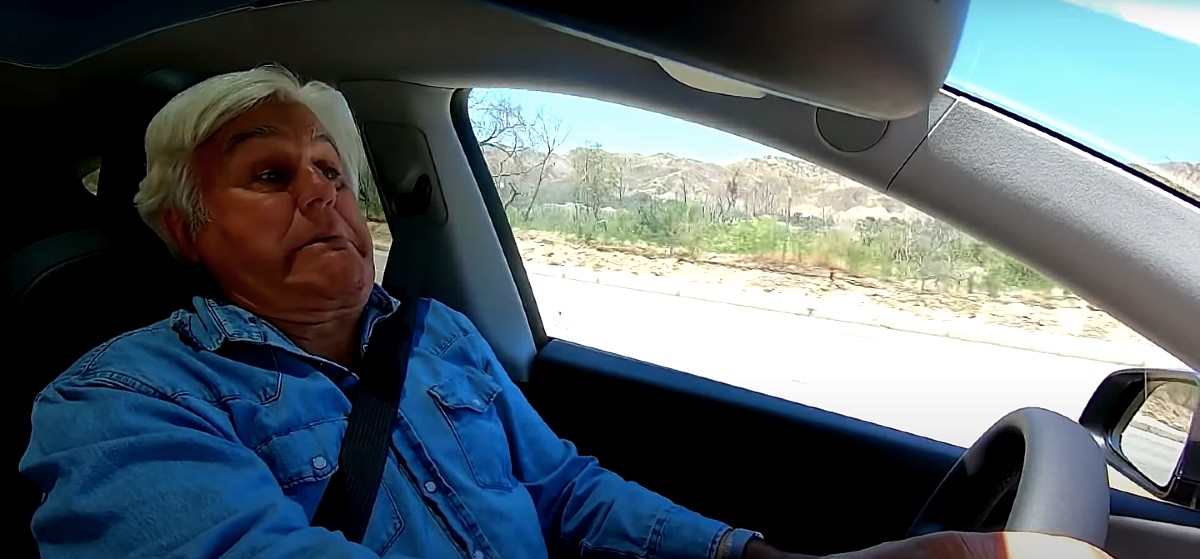
Final Thoughts
Leno is a fan of Tesla, and the Model Y is just another vehicle that he loves. He stated that even though he likes the all-electric crossover, “I’m gonna wait for one of those Roadsters.” Leno does not have any children or grandchildren to haul around, and while he loves the sustainable aspect of Tesla, he has no use for an electric crossover. His Model S is still his daily driver because he believes the environmental impact is crucial and practical, and it fits him and his wife comfortably and in sleek style.
Watch Jay Leno’s extensive review of the Tesla Model Y below.

Elon Musk
Starlink passes 9 million active customers just weeks after hitting 8 million
The milestone highlights the accelerating growth of Starlink, which has now been adding over 20,000 new users per day.

SpaceX’s Starlink satellite internet service has continued its rapid global expansion, surpassing 9 million active customers just weeks after crossing the 8 million mark.
The milestone highlights the accelerating growth of Starlink, which has now been adding over 20,000 new users per day.
9 million customers
In a post on X, SpaceX stated that Starlink now serves over 9 million active users across 155 countries, territories, and markets. The company reached 8 million customers in early November, meaning it added roughly 1 million subscribers in under seven weeks, or about 21,275 new users on average per day.
“Starlink is connecting more than 9M active customers with high-speed internet across 155 countries, territories, and many other markets,” Starlink wrote in a post on its official X account. SpaceX President Gwynne Shotwell also celebrated the milestone on X. “A huge thank you to all of our customers and congrats to the Starlink team for such an incredible product,” she wrote.
That growth rate reflects both rising demand for broadband in underserved regions and Starlink’s expanding satellite constellation, which now includes more than 9,000 low-Earth-orbit satellites designed to deliver high-speed, low-latency internet worldwide.
Starlink’s momentum
Starlink’s momentum has been building up. SpaceX reported 4.6 million Starlink customers in December 2024, followed by 7 million by August 2025, and 8 million customers in November. Independent data also suggests Starlink usage is rising sharply, with Cloudflare reporting that global web traffic from Starlink users more than doubled in 2025, as noted in an Insider report.
Starlink’s momentum is increasingly tied to SpaceX’s broader financial outlook. Elon Musk has said the satellite network is “by far” the company’s largest revenue driver, and reports suggest SpaceX may be positioning itself for an initial public offering as soon as next year, with valuations estimated as high as $1.5 trillion. Musk has also suggested in the past that Starlink could have its own IPO in the future.
News
NVIDIA Director of Robotics: Tesla FSD v14 is the first AI to pass the “Physical Turing Test”
After testing FSD v14, Fan stated that his experience with FSD felt magical at first, but it soon started to feel like a routine.

NVIDIA Director of Robotics Jim Fan has praised Tesla’s Full Self-Driving (Supervised) v14 as the first AI to pass what he described as a “Physical Turing Test.”
After testing FSD v14, Fan stated that his experience with FSD felt magical at first, but it soon started to feel like a routine. And just like smartphones today, removing it now would “actively hurt.”
Jim Fan’s hands-on FSD v14 impressions
Fan, a leading researcher in embodied AI who is currently solving Physical AI at NVIDIA and spearheading the company’s Project GR00T initiative, noted that he actually was late to the Tesla game. He was, however, one of the first to try out FSD v14.
“I was very late to own a Tesla but among the earliest to try out FSD v14. It’s perhaps the first time I experience an AI that passes the Physical Turing Test: after a long day at work, you press a button, lay back, and couldn’t tell if a neural net or a human drove you home,” Fan wrote in a post on X.
Fan added: “Despite knowing exactly how robot learning works, I still find it magical watching the steering wheel turn by itself. First it feels surreal, next it becomes routine. Then, like the smartphone, taking it away actively hurts. This is how humanity gets rewired and glued to god-like technologies.”
The Physical Turing Test
The original Turing Test was conceived by Alan Turing in 1950, and it was aimed at determining if a machine could exhibit behavior that is equivalent to or indistinguishable from a human. By focusing on text-based conversations, the original Turing Test set a high bar for natural language processing and machine learning.
This test has been passed by today’s large language models. However, the capability to converse in a humanlike manner is a completely different challenge from performing real-world problem-solving or physical interactions. Thus, Fan introduced the Physical Turing Test, which challenges AI systems to demonstrate intelligence through physical actions.
Based on Fan’s comments, Tesla has demonstrated these intelligent physical actions with FSD v14. Elon Musk agreed with the NVIDIA executive, stating in a post on X that with FSD v14, “you can sense the sentience maturing.” Musk also praised Tesla AI, calling it the best “real-world AI” today.
News
Tesla AI team burns the Christmas midnight oil by releasing FSD v14.2.2.1
The update was released just a day after FSD v14.2.2 started rolling out to customers.

Tesla is burning the midnight oil this Christmas, with the Tesla AI team quietly rolling out Full Self-Driving (Supervised) v14.2.2.1 just a day after FSD v14.2.2 started rolling out to customers.
Tesla owner shares insights on FSD v14.2.2.1
Longtime Tesla owner and FSD tester @BLKMDL3 shared some insights following several drives with FSD v14.2.2.1 in rainy Los Angeles conditions with standing water and faded lane lines. He reported zero steering hesitation or stutter, confident lane changes, and maneuvers executed with precision that evoked the performance of Tesla’s driverless Robotaxis in Austin.
Parking performance impressed, with most spots nailed perfectly, including tight, sharp turns, in single attempts without shaky steering. One minor offset happened only due to another vehicle that was parked over the line, which FSD accommodated by a few extra inches. In rain that typically erases road markings, FSD visualized lanes and turn lines better than humans, positioning itself flawlessly when entering new streets as well.
“Took it up a dark, wet, and twisty canyon road up and down the hill tonight and it went very well as to be expected. Stayed centered in the lane, kept speed well and gives a confidence inspiring steering feel where it handles these curvy roads better than the majority of human drivers,” the Tesla owner wrote in a post on X.
Tesla’s FSD v14.2.2 update
Just a day before FSD v14.2.2.1’s release, Tesla rolled out FSD v14.2.2, which was focused on smoother real-world performance, better obstacle awareness, and precise end-of-trip routing. According to the update’s release notes, FSD v14.2.2 upgrades the vision encoder neural network with higher resolution features, enhancing detection of emergency vehicles, road obstacles, and human gestures.
New Arrival Options also allowed users to select preferred drop-off styles, such as Parking Lot, Street, Driveway, Parking Garage, or Curbside, with the navigation pin automatically adjusting to the ideal spot. Other refinements include pulling over for emergency vehicles, real-time vision-based detours for blocked roads, improved gate and debris handling, and Speed Profiles for customized driving styles.








